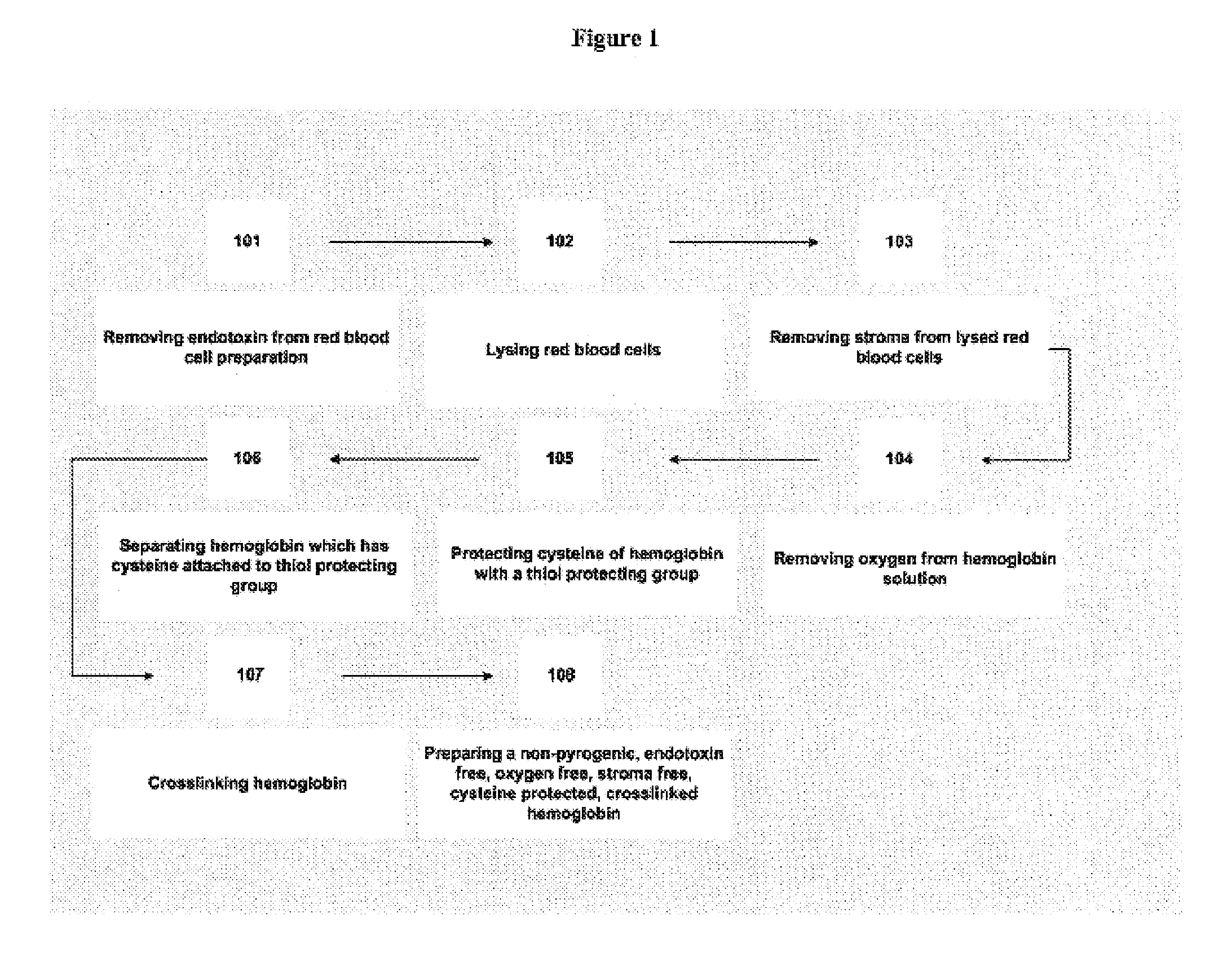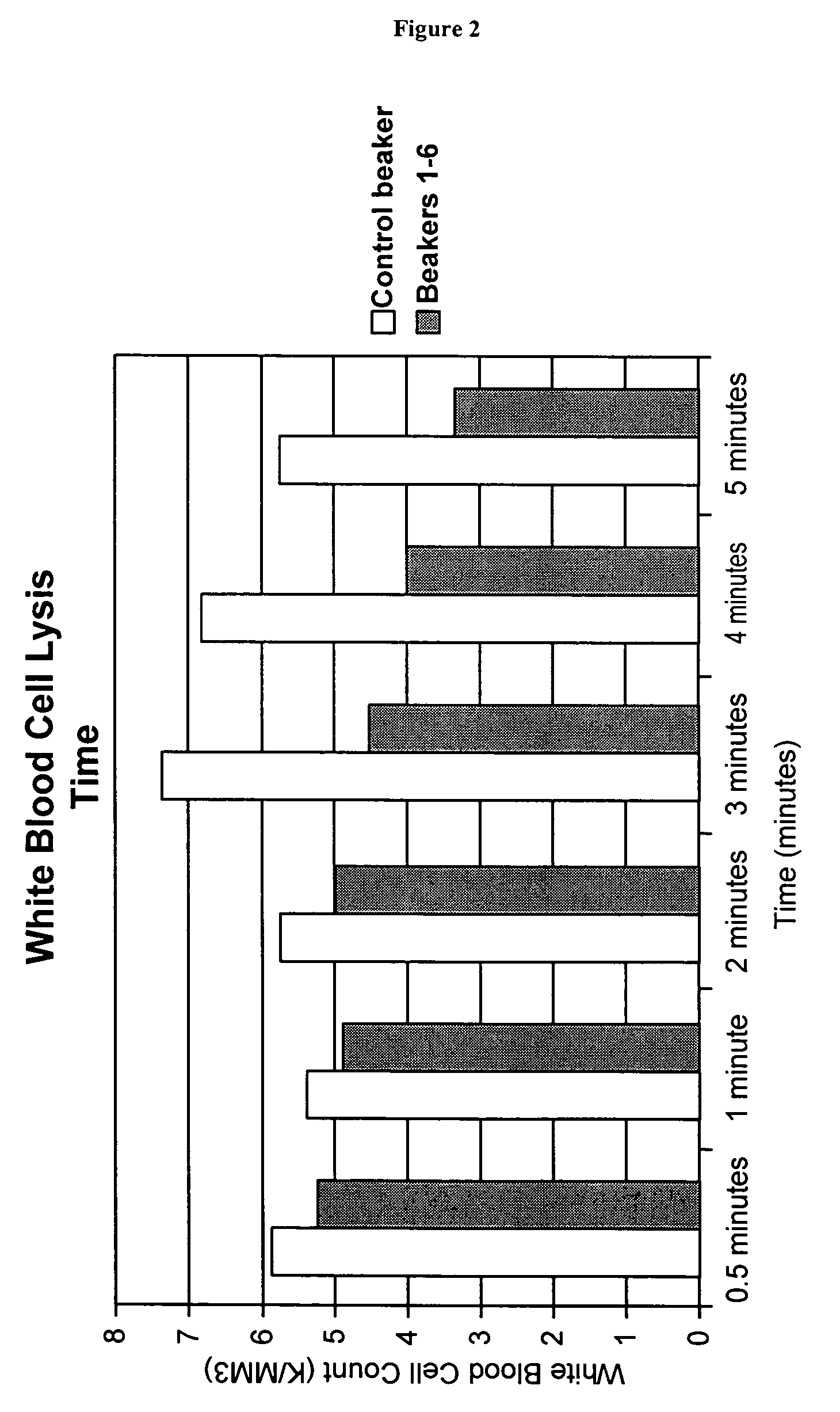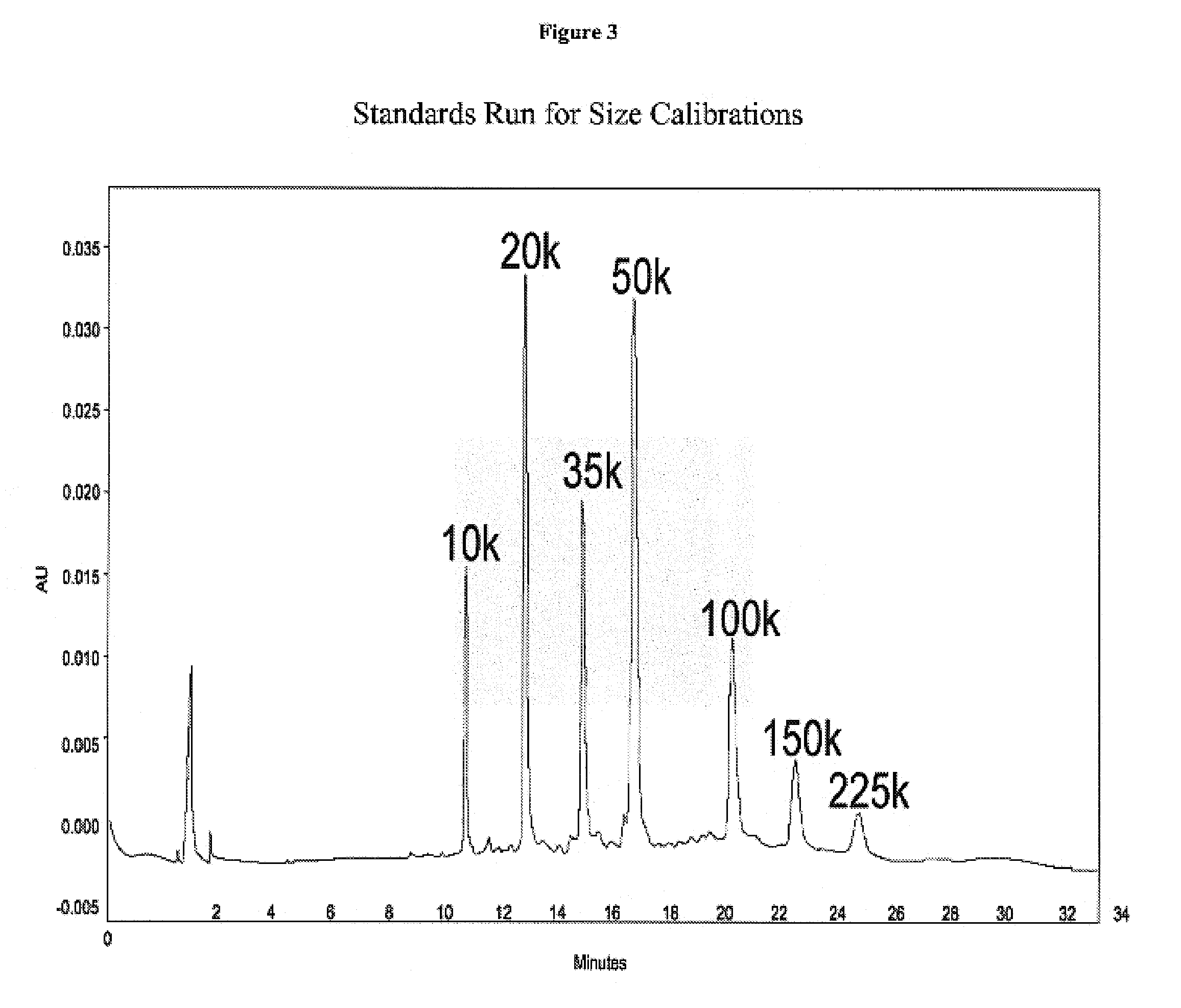Carboxymethylated cross-linked tetrameric hemoglobin
a cross-linked, tetrameric technology, applied in the direction of anti-noxious agents, peptide/protein ingredients, bulk chemical production, etc., can solve the problems of high risk of transfusion rejection, and inability to carry out transfusions, etc., to achieve safe storage
- Summary
- Abstract
- Description
- Claims
- Application Information
AI Technical Summary
Benefits of technology
Problems solved by technology
Method used
Image
Examples
example 1
Method
[0164]Bovine Blood Collection: The bovine blood collection is performed on site at a local meat processing facility. The subject is a purebred black angus steer that is raised by a local cattle rancher. The subject is placed in a cattle shoot located in the slaughter room of the meat processing facility. The subject is then executed by the “mushroom stunner” technique. Subject is raised head first to a level of approximately 1 meter above ground to expose the carotid arteries. The arteries are then severed and blood is transfused into a 1 gallon collection container which may hold 100 mL of 6% sodium ethylenediaminetetraacetic acid (EDTA) solution. The collection containers are placed in a cooler, packed in ice, and transported to the laboratory. Total collection time in the meat processing facility is about 15 minutes. Transport time back to the laboratory takes about 25 minutes.
[0165]Cleaning Whole Blood: Once the whole bovine arterial blood arrives in the laboratory it is d...
example 2
Lysing White Blood Cells
[0210]The objective of this experiment is to determine the amount of time it takes for white blood cells to lyse. This allows optimization of red blood cell lysis to obtain the maximum amount of hemoglobin. In the process of isolating hemoglobin, red blood cells are lysed. At this time a specific amount of DI water may be added. The amount of time it takes for the red blood cells to lyse can be about 30 seconds. During this step any white blood cells that are remaining in the blood can lyse. When white blood cells lyse they can release protease enzymes which can have negative impact on harvested hemoglobin.
[0211]Procedure: 2000 mLs of whole blood is filtered through only the 100μm reservoir filter of the Cell Saver 5. Seven beakers are then filled with 200 mLs of blood. One beaker is designated as the control. The other six beakers are then assigned a specific time for lysing at times of 30 seconds and then 1, 2, 3, 4, and 5 minutes. The control beaker is sta...
example 3
Rabbit Safety Trial
[0216]This rabbit trial demonstrates that dXCMSFH of the present invention can be compatible with the sensitive physiological control mechanisms mediating blood flow and pressure involving nitric oxide (NO). The dXCMSFH is infused into 25 rabbits at levels of 476 to 1143 mg / kg (average 699 mg / kg) of a 10-12% solution and results in 100 percent survival after more than 3 days. The hemoglobin without the chemical modification, when administered in 3 rabbits results in immediate death in all 3 subjects. Finally, 4 rabbits have 40-50% of their calculated blood volume removed with simultaneous dXCMSFH replacement, and subsequent daily infusion of dXCMSFH, to levels of 3871-4528 mg / kg total dose (average 4339 mg / kg). The rabbits show 100% survival and no obvious signs of morbidity. The dXCMSFH is infused into 29 rabbits without a single death due to vasoconstrictive activity. The chemical blockage of the nitric oxide (NO) binding cysteine site in dXCMSFH may be associat...
PUM
| Property | Measurement | Unit |
|---|---|---|
| molecular weight | aaaaa | aaaaa |
| total molecular weight | aaaaa | aaaaa |
| total molecular weight | aaaaa | aaaaa |
Abstract
Description
Claims
Application Information
 Login to View More
Login to View More - R&D
- Intellectual Property
- Life Sciences
- Materials
- Tech Scout
- Unparalleled Data Quality
- Higher Quality Content
- 60% Fewer Hallucinations
Browse by: Latest US Patents, China's latest patents, Technical Efficacy Thesaurus, Application Domain, Technology Topic, Popular Technical Reports.
© 2025 PatSnap. All rights reserved.Legal|Privacy policy|Modern Slavery Act Transparency Statement|Sitemap|About US| Contact US: help@patsnap.com



